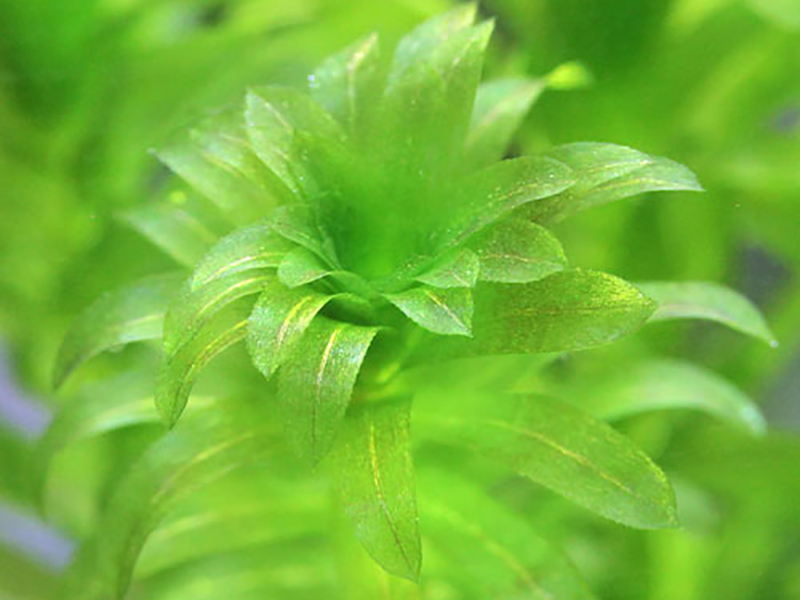rearing
Anacaris is one of the submerged plants of the family Cercidiphyllaceae of the phylum Cercidiphyllaceae. In stores, it is sometimes sold under its Japanese name, "giant duckweed. In this issue, we will explain the characteristics of anacaris and how to grow it.
Table of Contents

Anacaris is one of the submerged plants of the family Cnidaria of the phylum Cnidaria. It is one of the varieties that are generally known as goldfish algae, just like cabomba and matsumo. In stores, it is sometimes sold under its Japanese name, "giant watermilfoil. Anacaris has 15-40 mm leaves and beautiful white flowers above the water from around May to October.Originally, this species is native to the warm climates of South America (southeastern Brazil, Argentina, Uruguay, etc.), but it is now propagating in many parts of the world due to its strong vitality and other factors. Naturally, it can be found growing wild in rivers, lakes, and reservoirs in Japan.
Anacaris is classified as one of the easiest types of aquatic plants to grow.
The first way to grow them is to prefer a water temperature of 10 to 30 degrees Celsius. It also prefers a slightly acidic to slightly alkaline environment with a pH (pH pH) value of 6.0 to 8.0.
Anacaris itself has a very high ability to adapt itself, but it is vulnerable to sudden changes in water quality and temperature, and as a result, there are periods in the spring and fall when it is more susceptible to pain, so make sure to take good care of it.
The amount of light exposure is very important in growing anacaris. Anacaris grown in high light will have dark green leaves. Conversely, an anacaris grown in a low-light area will have light green leaves.
Gradually, as they age, the color of the leaves will change from green to black. If the black leaves are left in place, they will dissolve and adhere to the walls of the aquarium, making them difficult to remove.

As a way to care for Anacaris,Anacaris grows only in one direction, so if you use it floating on the surface of the water, please have it done frequently, as just tearing off the side that does not grow will provide some care.
If you are unsure of the timing, for example, you should care for the anacaris when it is present and has reached a certain length.For example, it is recommended that you set your own guidelines, such as "10 cm" or more, so that you will have less hesitation.
Anacaris grows at a rapid pace, and if left unattended, the difference between areas exposed to light and areas not exposed to light will occur in a short period of time, causing the color of the anacaris leaves to change and eventually leading to deterioration of water quality.
The easiest and most popular method of increasing anacaris is the method of plugging back. In the plugging method, the bottom of the knot in the center of the entire anacaris is cut off, and the top of the cut anacaris is planted in the bottom bed, where it will root and grow.
It is important to note that anacaris that are too damaged or too short may not work well, so be sure to use anacaris with good leaf color and reasonable length (10 cm or longer).
Another way to increase the number of anacaris is to divide the anacaris during its growth process, which may produce side shoots. Cutting the divided shoots and dividing the plant into a single anacaris plant. If you cut the divided side shoots before they reach a certain length (5 cm or more), they may not be able to obtain enough nutrition and may die.

Anacaris will be the most common type of water plant to include with goldfish.
Anacaris is often used for spawning killifish as well as goldfish. It is the same for goldfish, and many people use anacaris for goldfish spawning.
The most commonly used water plant for spawning goldfish is the Photinia sp. However, Photinia sp. is not suitable for those who keep goldfish indoors or in other places where there is not much sunlight, because Photinia sp. is best suited to sunlight. Anacaris is suitable for such places. Anacaris has larger leaves than other aquatic plants and is more difficult to defoliate.
This makes it suitable for egg-laying because the ground contact surface between the leaf and the egg is wide when the egg is placed on the leaf, and the leaf is less likely to fall off even if multiple eggs are placed on the same leaf.